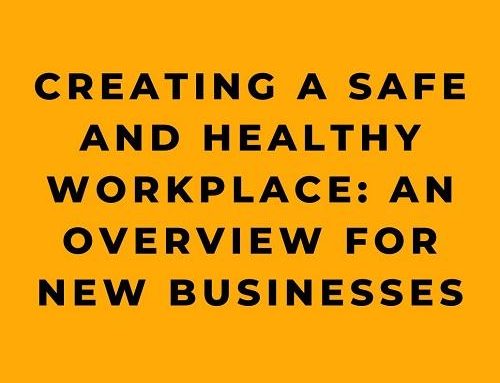In this article, we outline an ISO 45001 Six-Step Action Plan for Safety Management.
STEP 1 – Become Familiar with the ISO 45001 Standard and the Concept of OSH Management Systems
First of all, what is ISO 45001? Well, ISO 45001 is an international standard that sets the standard for Occupational Health and Safety (OH&S) management systems. It is the first global standard of its kind, and it provides a framework for organizations to systematically identify and manage hazards and risks in the workplace. By implementing this standard, organizations can not only meet legal and regulatory requirements, but also enhance their organizational performance and reputation.
One of the key components of ISO 45001 is its focus on continuous improvement. The standard requires organizations to regularly review and evaluate their OH&S management systems to identify areas for improvement and make necessary changes. This ensures that the system is always up-to-date and effective in addressing hazards and risks in the workplace.
Another important aspect of ISO 45001 is employee engagement. The standard requires organizations to involve employees, management, and other stakeholders in the development and implementation of the OH&S management system. This creates a sense of ownership and commitment among all stakeholders, and ensures that everyone is working towards the same goal of promoting a safe and healthy workplace.
ISO 45001 also includes specific requirements for hazard identification and risk assessment. Organizations must identify and assess hazards in the workplace, implement controls to eliminate or mitigate risks, and monitor and measure the effectiveness of those controls. This helps organizations proactively identify and address hazards and risks, rather than waiting for an accident or incident to occur.
ISO 45001 includes requirements for certification. Organizations can choose to be certified by an independent certification body to demonstrate their commitment to safety and gain recognition and credibility in the marketplace. This certification process involves an assessment to verify that the organization’s OH&S management system meets the standard’s requirements.
STEP 2 – Analyze Your Current OSH Management System
The second step in creating a comprehensive OSH management system is to assess the current state of your organization’s existing policies, procedures, and practices. This initial assessment is crucial in identifying areas for improvement and developing a plan to address them.
Conducting a thorough analysis of your current OSH management system involves reviewing all relevant documentation, including policies, procedures, and training materials, as well as observing work processes and conducting employee interviews. By taking stock of where you stand, you can pinpoint specific areas that need attention and develop a plan to address them.
During the assessment, it’s essential to involve employees and other relevant stakeholders to ensure that the analysis is comprehensive and accurate. By involving employees, you gain valuable insight into the day-to-day realities of the workplace and can identify hazards and risks that may not be immediately obvious. This helps to ensure that the assessment is as accurate and comprehensive as possible.
In conclusion, the second step in creating a comprehensive OSH management system is to conduct a thorough assessment of your current policies, procedures, and practices. By taking stock of where you stand, you can identify areas for improvement and develop a plan to address them. Involving employees and other relevant stakeholders is crucial in ensuring that the assessment is accurate and comprehensive. With this information, you can begin to take proactive steps towards creating a safer and healthier workplace.
STEP 3 – Create Policies and Objectives to Address Gaps in the Current System.
The third step in creating a comprehensive OSH management system is to develop an OSH policy that sets the tone for the organization’s commitment to safety and serves as a foundation for all OSH management activities. A clear and concise policy is essential in communicating the organization’s values and expectations regarding safety and health to employees and other relevant stakeholders.
The development of an OSH policy should involve consultation with employees and relevant stakeholders, including safety representatives, management, and employees themselves. This ensures that the policy reflects the needs and concerns of all parties and is tailored to the specific risks and hazards present in the workplace.
A well-written policy should be clear and easy to understand and should include the organization’s commitment to safety and health, details of how the organization will manage safety and health risks, and the roles and responsibilities of employees and management. It should also include a statement on how the policy will be reviewed and updated on a regular basis.
The third step in creating a comprehensive OSH management system is to develop an OSH policy that sets the tone for the organization’s commitment to safety. This policy should be developed in consultation with employees and relevant stakeholders, should be clear and easy to understand, and should include the organization’s commitment to safety and health, details of how the organization will manage safety and health risks, and the roles and responsibilities of employees and management. A regularly review and update of the policy is important to keep it relevant and effective.
STEP 4 – Engage Stakeholders
The implementation of ISO 45001 offers a transformational opportunity for organizations to create a culture of safety and health that is not just compliant, but provides tangible value. Through gathering input from the entire organization and understanding the different perspectives that people have about safety and health risks, it is possible to construct an effective gap analysis. This analysis will identify areas of improvement that, when addressed, can help foster a culture of ownership within the safety management system. Leadership must also be engaged and educated on the operational and financial impacts of ISO 45001 so they can make an informed decision. When done right, the implementation of the standard can be a catalyst for positive organizational change, leading to a more productive and safe work environment. The path to successful ISO 45001 implementation is no easy feat. It requires a comprehensive plan, with the right people involved, so that the organization can truly reap the rewards. It must start with gathering the different perspectives of stakeholders, from the workers on the ground to the board of directors. With this in place, organizations can ensure that their safety management system not only meets the standard’s requirements, but that it also provides value to all levels of the organization.
STEP 5 – Determine Priorities and Establish Goals
To unlock the full potential of ISO 45001, organizations must prioritize the actions that need to be taken and determine which are the most important and urgent. This process should include the identification of any gaps in the organization’s current processes, as well as the development of specific goals and objectives to close those gaps. Organizations should take a strategic approach when setting their safety and performance goals, taking into account the financial and operational realities of the organization. By carefully considering the resources, organizational culture, and stakeholder expectations, organizations can develop goals that provide clear pathways to success and help to ensure that the organization’s OSH management system is effective and sustainable. By taking the time to strategically determine priorities and establish goals, organizations can ensure that the implementation of ISO 45001 will be effective and that the organization can achieve its desired safety and performance objectives.
STEP 6 – Review and Refine Your OSH Management System on an Ongoing Basis
The next step is assessing your current OSH practices to determine what is working and what needs improvement. This assessment should include a review of your policies, procedures, systems, and processes. It is also important to review how your organization measures and reports safety performance. Once the plan is in place, you should monitor and review performance regularly. This can include tracking safety and health performance metrics, as well as conducting periodic internal audits. By monitoring and reviewing performance, you can ensure that your OSH management system is meeting your goals and making progress toward continuous improvement.
Direct reference link to ISO 45001:20018










